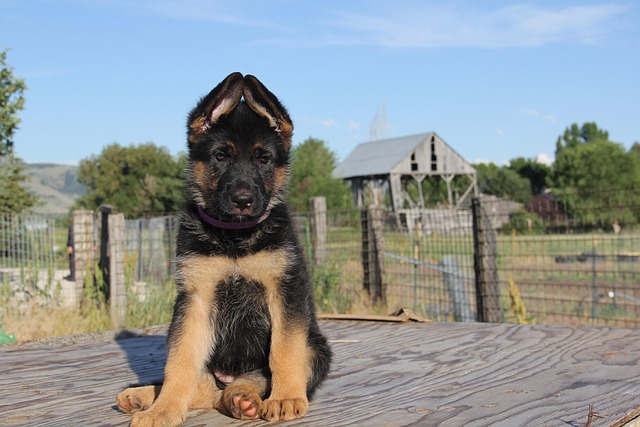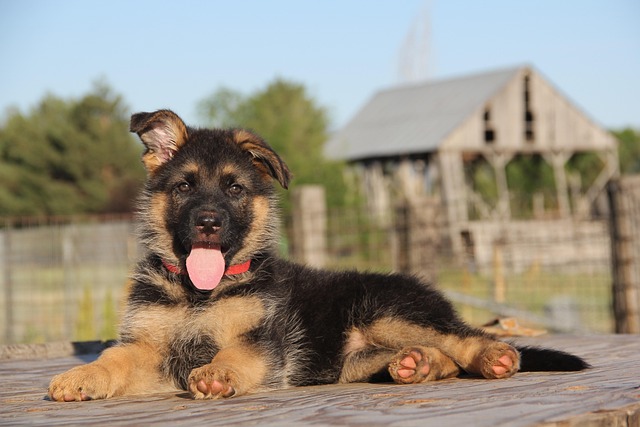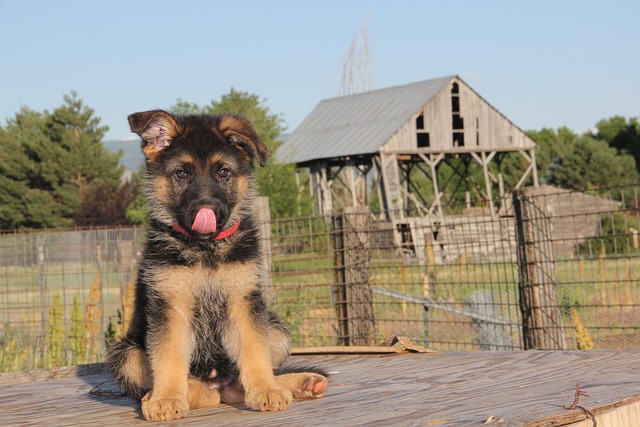German shepherd puppies go through amazing ear transformations. These beloved dogs start life with floppy ears that, by the time they’re fully grown, grow up to 15 times their original size
New German Shepherd owners often ask about their puppy’s floppy ears. The trip to standing ears starts between 8 and 12 weeks old. Some puppies might take up to 24 weeks before their ears stand tall. Your puppy’s ears might go up and down during teething (3-5 months). This happens because calcium goes to their growing teeth instead of the ear cartilage.
The sort of thing I love is that they have straight-standing ears by 7 months old. Still, genetic factors can delay ear development in about 20% of puppies. Most German Shepherds follow similar ear development patterns. They start with floppy ears at birth, and their ears get stronger as they grow. About 93% of German Shepherds
This piece takes you through each stage of German Shepherd ear development week by week. You’ll learn about what affects the timing and get practical tips to help healthy ear growth. We’ll answer your questions about your puppy’s ears and explain this unique growth process.
Week-by-Week German Shepherd Ear Stages
The sort of thing I love is how German Shepherds’ ears change from floppy to erect. Let’s tuck into each stage your puppy goes through to get those iconic standing ears.
Weeks 1-4: Floppy ears are normal
German Shepherd puppies start life with soft, floppy ears. These early weeks show ears that aren’t just floppy – they’re still developing simple functionality. Your puppy’s ears don’t even open to receive sound until about a week old. Those cute droopy ears make perfect sense because the cartilage and muscles need more strength.
You’ll see those ears hanging down like umbrellas over their face during this time. This original stage marks the beginning of an amazing change that happens over the next few months.
Weeks 5-8: Early signs of movement
Your puppy’s ears start showing the first hints of movement between weeks 5-8. The ears might quickly perk up, then flop down, or one ear could be more active than its partner.
Some puppies’ ears might stand as early as 6-7 weeks. This varies a lot among puppies, so don’t worry if your pup’s ears stay floppy – it’s completely normal.
Weeks 9-12: Ears may start to rise
The 9-12 week period brings crucial changes to your German Shepherd’s ear development. The ears usually begin to stand more often between 8 to 12 weeks. Your puppy’s ears might do all kinds of funny things – standing one day, flopping the next, or even switching positions throughout the day.
Each morning could bring a new ear position. You might see one ear standing while the other flops, giving your pup that cute, crooked look. This uneven growth is normal and adds to your puppy’s charm.
Weeks 13-16: Teething may cause ears to droop again
The heavy teething phase hits during weeks 13-16, which affects ear development a lot. Your puppy’s body moves calcium from other parts, including the ears, to help grow teeth. Even ears that stood before might suddenly droop.
Teething usually happens between 16-20 weeks. This can worry owners, but it’s normal. One breeder puts it simply: “I have never seen a pup whose ears did not go back up when this happens”.
Week 17-24: Most ears should be standing
German Shepherd puppies usually get their permanent upright ears between 17-24 weeks (about 4-6 months). The German Shepherd Dog Club of America’s data shows that 93% of German Shepherds have fully erect ears by 7 months.
Breeders suggest thinking about intervention if your puppy reaches 5 months without standing ears. Most German Shepherds show those magnificent upright ears by 6-7 months.
Note that puppies develop at their speed. Some get standing ears at 8 weeks, while others need the full 6 months. Changes in ear position and firmness during this time are normal and part of your puppy’s unique growth experience.
What Affects the Timing of Ear Standing

The time when German Shepherd puppies’ ears stand up varies from pup to pup. Let’s learn about the factors behind this and how you can help your puppy’s ears develop. You’ll also understand when deviations from normal timelines shouldn’t worry you.
Genetics and breed lines
Your puppy’s genes are the biggest factor in ear development. The. Puppies born to parents with strong, erect ears usually develop them faster and more reliably. Scientists have found specific genetic regions on canine chromosome 10 that associate with ear type in different dog breeds.The erect ear trait in German Shepherds is inherited dominantly
Your puppy’s family history can tell you a lot about ear development patterns. Studies show. The remaining 7% might never get their ears to stand fully. These differences mostly come down to genetics.About 93% of German Shepherds have fully erect ears by 7 months
American bloodlines often have ears larger than the breed standard. This can make it harder for their ears to stand properly. The parents’ ear structure gives you a good idea of what to expect from your puppy.
Teething and calcium use
The teething process has a big effect on ear development. Your puppy’s body uses calcium to grow adult teeth between 3-6 months. This shift in calcium often makes standing ears droop for a while.
This explains why German Shepherd owners see their puppy’s ears go up, down, and up again during teething. The ears usually stand permanently once teething finishes and calcium levels return to normal throughout the body.
Nutrition and overall health
What your puppy eats shapes how their ear cartilage develops. The right diet provides everything needed for strong cartilage and ear muscles. The vital nutrients include:
- Protein for muscle development and overall growth
- Calcium and phosphorus in proper ratios for cartilage formation
- Vitamins A and D, which support bone and cartilage health
A balanced diet is vital but tricky. Too little calcium stops proper cartilage growth, while too much can lead to problems like hip dysplasia. On top of that, health issues or parasites that steal nutrients can affect how ears stand.
Good veterinary care, parasite prevention, and quality nutrition build the foundation for proper ear development.
Injuries or rough play
Physical damage can change how ears develop. German Shepherd puppies love to play and can get rough with their littermates. Ear injuries during early development might permanently change how the ears stand.
Small accidents like ear pulling during playtime can harm cartilage. People can accidentally cause damage, too. Too much ear rubbing or handling before the ears start standing on their own might hurt the cartilage structure.
You should watch your puppies during play sessions. Make sure other pets and children don’t pull on your German Shepherd’s ears, especially during these important developmental stages.
How to Support Healthy Ear Development Naturally

Your German Shepherd puppy’s ear development needs the right mix of nutrition, play, and handling. The right approach can help those cute floppy ears naturally stand up into their signature upright position.
Best foods and supplements for cartilage
Good nutrition builds the foundation for healthy ear development. Feed your German Shepherd puppy high-quality large breed puppy food with balanced calcium and phosphorus. The AAFCO suggests 0 to 4.5g calcium and 5 to 4.0g phosphorus per 1000 calories. The calcium-to-phosphorus ratio should stay between 1:1 and 1.8:1.
Many people think adding calcium helps, but it doesn’t. Your puppy’s ears are mostly cartilage, not bone. Extra calcium won’t help the ears stand and could harm your puppy’s kidneys and heart through hypercalcemia.
These natural ingredients support cartilage development better:
- Glucosamine sources: Bone broth, chicken feet, and duck feet naturally contain glucosamine that helps build cartilage
- Antioxidant-rich treats: Carrots, apples, pumpkin, sweet potatoes, celery, and watermelon contain vitamin C that supports cartilage formation
- Omega-3 fatty acids: These support overall skin health and can benefit ear development
Chew toys that help the ear muscles
Chewing plays a vital role in ear development. Your German Shepherd’s ears have 18 muscles each, controlled by the temporalis muscle. This muscle helps with chewing and keeps the ears upright.
Strong chew toys like Nylabones, antlers, Kongs, and bully sticks work best. They build jaw strength and support the ear muscles. Your puppy can relieve teething discomfort while building stronger ear muscles.
Some breeders suggest “ear exercises.” You can whistle or make sounds that make your puppy’s ears perk up about 30 times each day. This helps strengthen their ear muscles naturally.
Safe play and handling tips
The way you handle your puppy’s ears can affect their development. Young cartilage stays delicate until it’s fully formed. Don’t play with or fold the ears down. This can damage the cartilage during key growth stages.
Pet your puppy’s ears with backward strokes that follow their natural direction. This gentle touch lets you bond without causing harm.
Watch your puppy during playtime with other dogs to prevent ear pulling. Rough handling early on can permanently affect how the ears stand. Keep your puppy away from things that might bump their ears, like low crate tops or fence openings they might stick their head through.
When to Worry and What to Do

Watching your German Shepherd puppy’s ear development helps you spot when intervention becomes needed. Your puppy’s iconic pointed ears might need extra support to stand correctly, even with good care.
Signs your puppy may need help
Your puppy might need assistance if you spot:
- One ear droops while the other stands upright
- Both ears stay completely floppy after 5 months
- Ears that stood before suddenly droop (not from teething)
- Redness, swelling, discharge, or bad smell from the ears
- Too much scratching or pawing at the ears
These signs point to mechanisms beyond normal growth patterns. Your puppy’s discomfort shows through head shaking, face rubbing against furniture, or sensitivity to ear touches.
At the time to think over taping or gluing
The right timing makes all the difference with ear taping. Most experts say:
“If they are not up when the dog is through teething (between 16 weeks and 20 weeks of age), I tell my puppy customers to get very interested in their ears”.
Your puppy’s ears should show signs of standing on their own by 5 months. That’s the right time to think about helping them. The success rate drops if you wait too long – “When ears are taped at 7 and 8 months, there is very little chance of it working”.
Why early intervention matters
Quick action gives you the best chance to succeed. The cartilage hardens permanently after 7 months, often creating a “crease” that stops the ears from standing. The sweet spot falls between 5-7 months as the ear cartilage stays soft enough to shape.
Starting too soon might harm developing ears. This balance shows why timing matters so much.
At the time to ask your vet
Book a vet visit if you notice:
- Signs of infection (discharge, odor, redness, swelling)
- Ears don’t improve after proper taping
- Pain or discomfort from the ear touching
- Head shaking or ear scratching that won’t stop
- Ears still don’t stand by 7-8 months
Your vet can check for medical issues like ear infections, parasites, or poor nutrition. They can also guide you through proper taping methods or talk about surgery options for adult dogs whose ears never stood naturally.
What If the Ears Never Stand?

Your German Shepherd puppy’s ears might stay floppy even when they grow up, no matter how hard you try. About one in five German Shepherds never develops those typical pointy ears. The best thing for you and your pup is to accept this fact.
Understanding breed standards vs. pet quality
The United Kennel Club has strict rules about how ears should look. They say German Shepherd ears must be “erect, moderately pointed, of medium size, broad at the base, and set high”. A German Shepherd with droopy ears can’t compete in shows.
The difference between “show quality” and “pet quality” dogs matters a lot. Your German Shepherd can be an amazing companion, working dog, and family member, whatever their ear position. Floppy-eared shepherds are just as smart, loyal, and capable as dogs with pointy ears.
Why floppy ears don’t affect health
Floppy ears are just about looks. They don’t change your dog’s quality of life, hearing, or health at all. Many owners love their dog’s soft, expressive, floppy ears and see them as part of what makes their pet special.
Dogs with floppy ears need a bit more ear cleaning because the shape reduces airflow and might lead to more infections. Regular cleaning takes care of this small issue easily.
Surgical options and why they’re not recommended
Vets don’t recommend surgery for “fixing” floppy ears, though some options exist:
- Implants surgically added to help the ears stand
- Cartilage suturing across the head
- Cutting and shortening cartilage at the base
Most vets advise against these procedures because they’re just for looks and bring unnecessary risks like infection, scarring, and pain. These surgeries often cause more harm than good.
Conclusion
A German Shepherd’s ear development is one of the breed’s most fascinating features. Your patience will be your best friend during this time. Those iconic straight ears usually pop up between 8-24 weeks, but some pups might need extra time due to their genes, teething, or other factors.
Good nutrition is a vital part of healthy ear cartilage development. Chew toys also help build the muscles needed for upright ears. Be gentle with your puppy’s ears during this important time to protect their delicate structure.
Your pup’s genes play the biggest role in how their ears will stand. Puppies from bloodlines with strong ear carriage tend to develop straight ears more easily. Don’t worry if you see some drooping during teething – it’s perfectly normal for many German Shepherd puppies.
You might want to check with a vet around the 5-month mark if those ears show no signs of standing up. But here’s the thing – a German Shepherd with floppy ears makes just as wonderful a companion, whatever their ears look like. These dogs are just as smart, loyal, and capable as their pointy-eared family members.
The bond between you and your German Shepherd exceeds any physical traits. Your pup’s unique ear experience adds its chapter to their story. Those floppy puppy ears changing day by day will give you precious memories to treasure throughout your companion’s life. Each stage of this amazing process deserves to be celebrated!
FAQs
Q1. At what age do German Shepherd puppies’ ears typically stand up?
German Shepherd puppies’ ears usually begin to stand up between 8 to 12 weeks of age. However, this can vary, with some puppies’ ears standing as early as 6 weeks, while others may take up to 6 months to fully stand.
Q2. Is it normal for my German Shepherd puppy’s ears to go up and down during teething?
Yes, it’s completely normal. During the teething phase (around 3-5 months), puppies’ ears may go up, come down, and go up again as calcium is diverted to developing teeth instead of ear cartilage.
Q3. How can I support my German Shepherd puppy’s ear development naturally?
You can support ear development by providing a balanced diet rich in nutrients, offering appropriate chew toys to strengthen jaw and ear muscles, and avoiding rough play or handling of the ears during the critical development stages.
Q4. Should I be concerned if my German Shepherd’s ears aren’t standing by 5 months?
If your puppy’s ears show no signs of standing by 5 months, it may be time to consider intervention. Consult with your veterinarian about potential options, such as taping, but remember that early action provides the best chance of success.
Q5. Do floppy ears affect a German Shepherd’s health or abilities?
No, floppy ears are purely a cosmetic issue and don’t impact your dog’s quality of life, hearing ability, or overall health. German Shepherds with floppy ears can be just as intelligent, loyal, and capable as those with erect ears.
